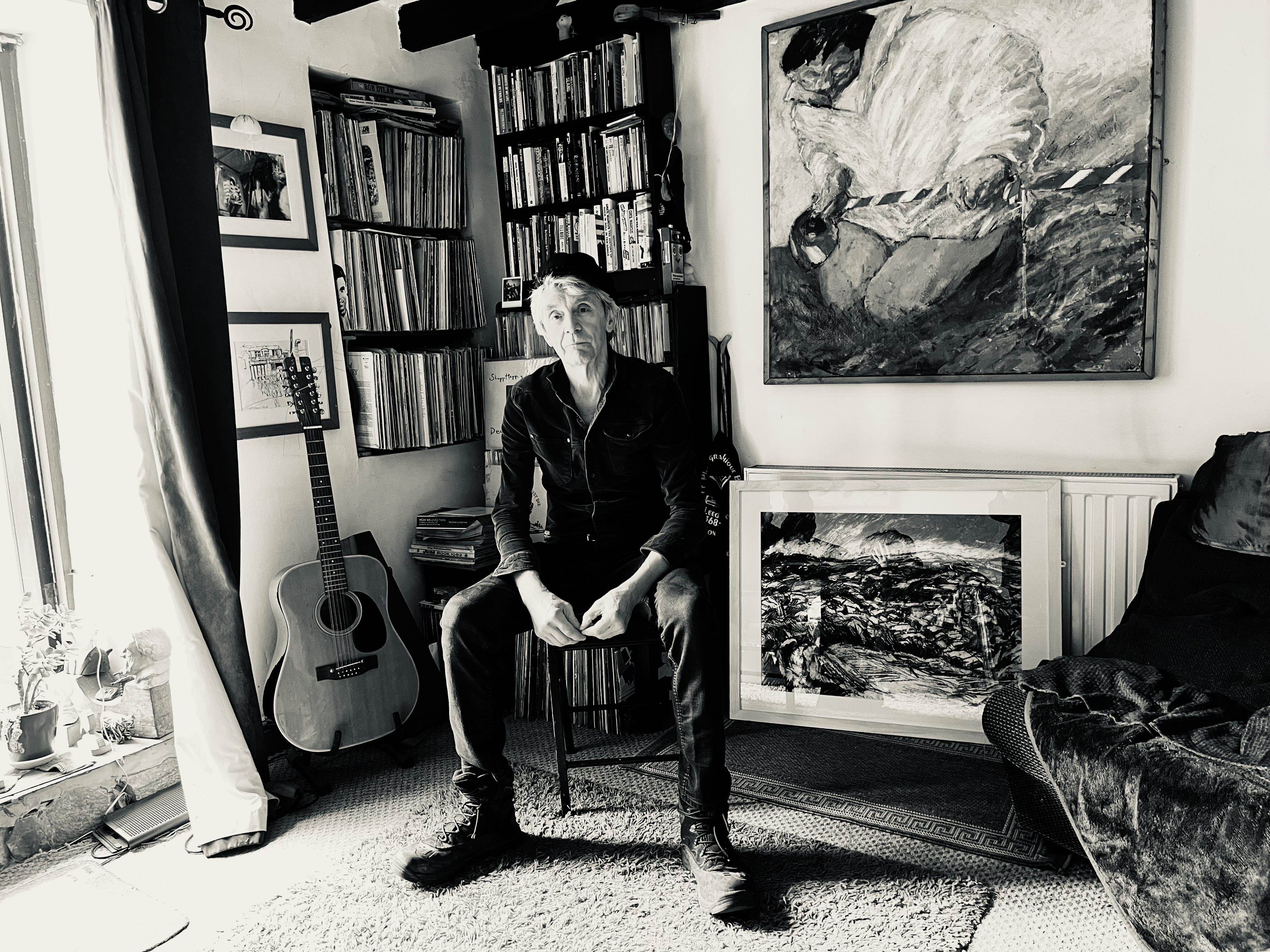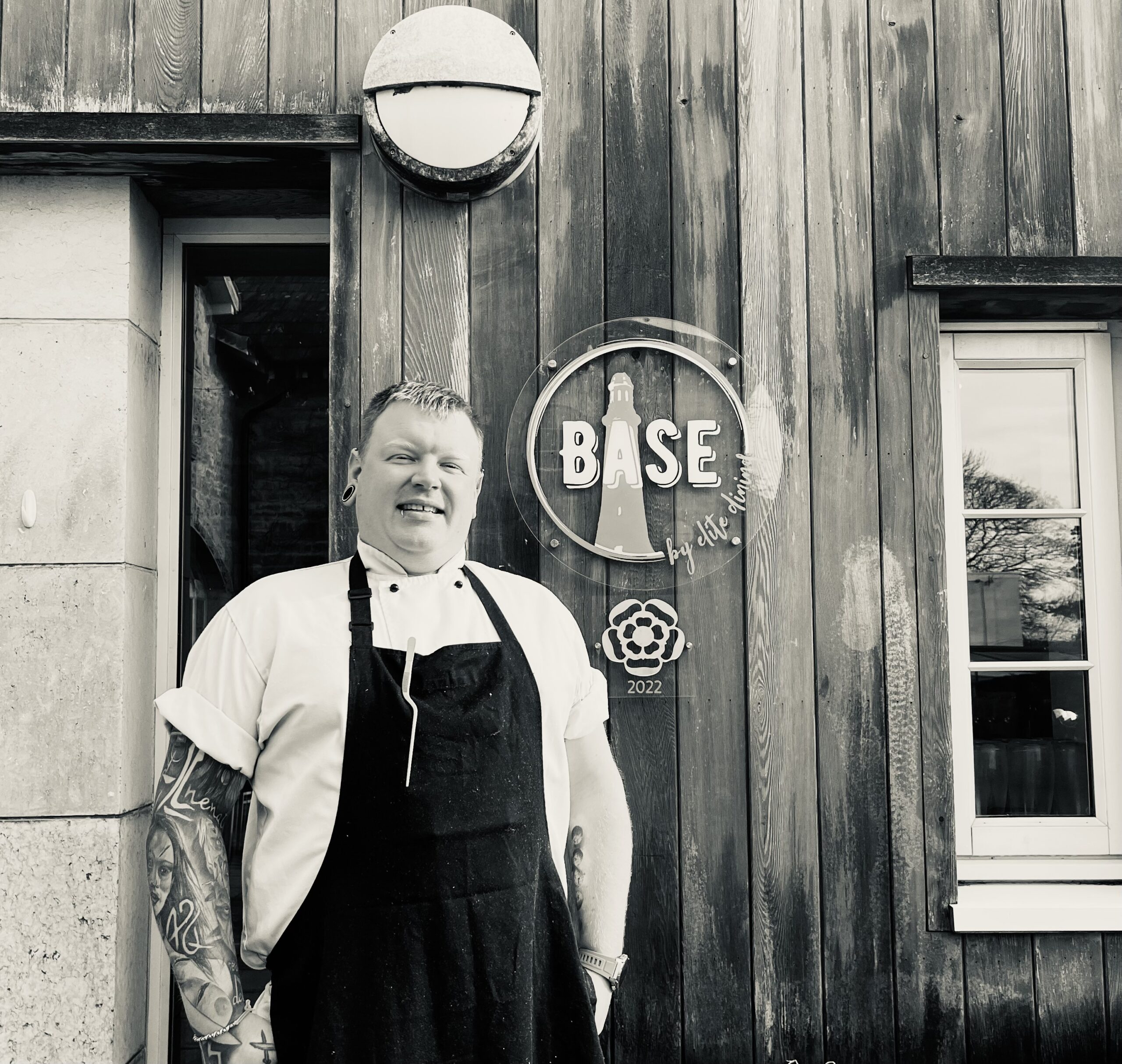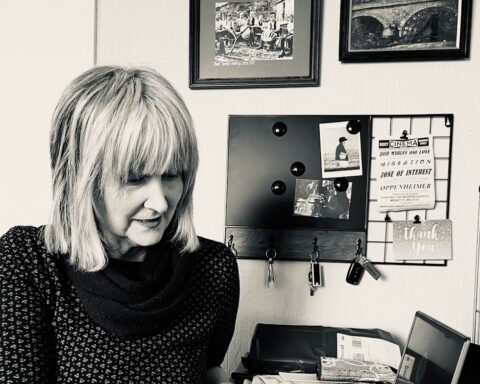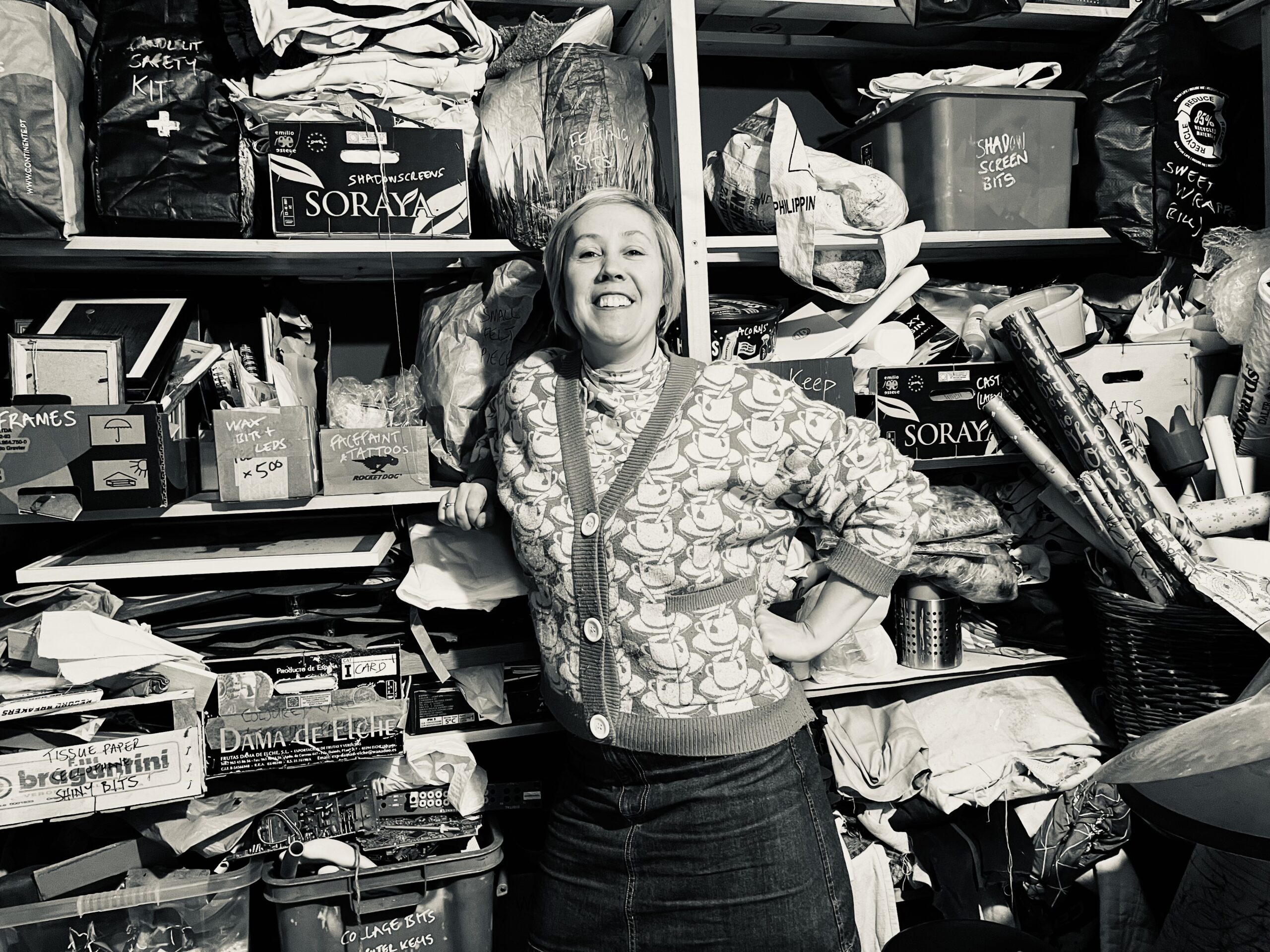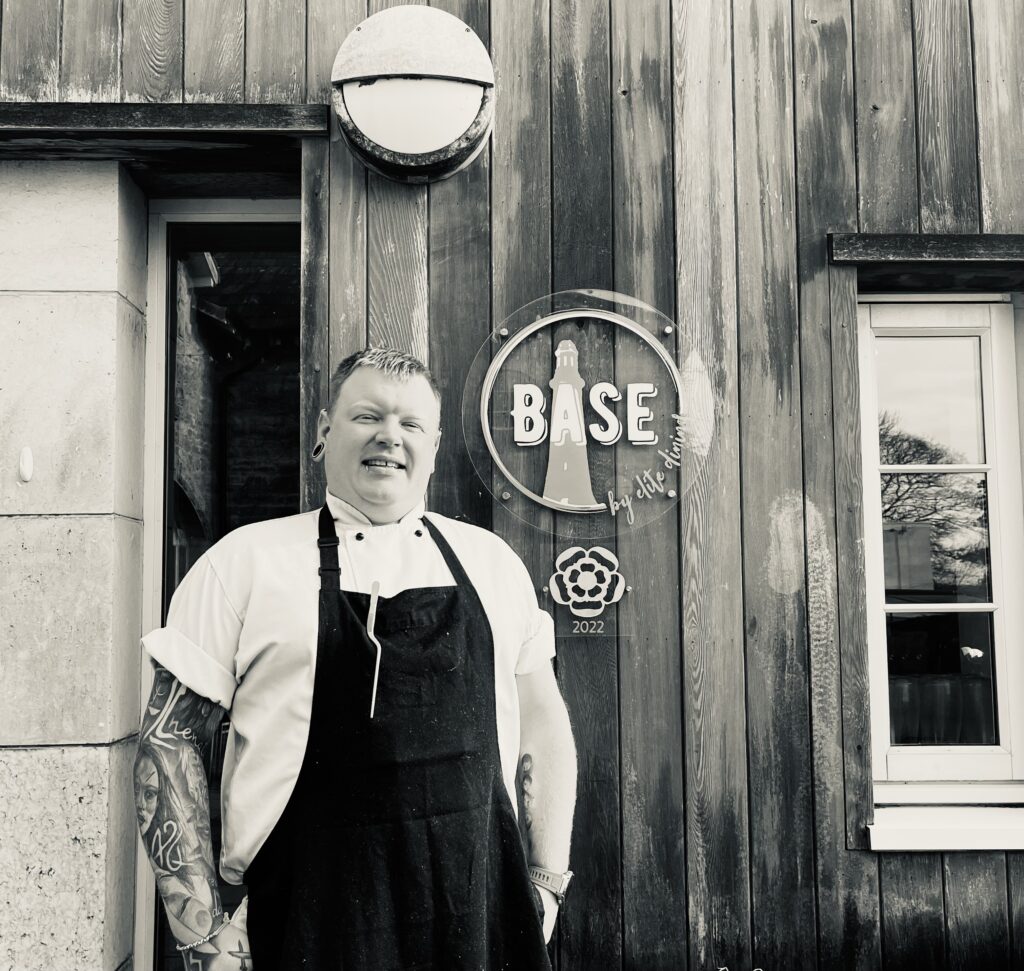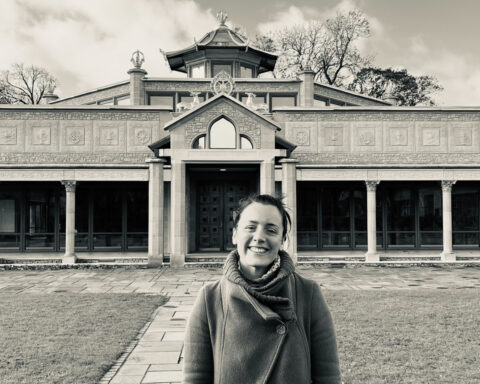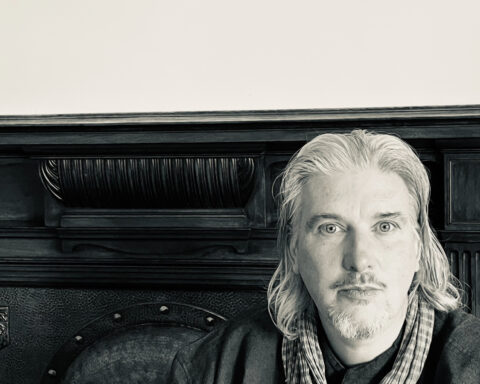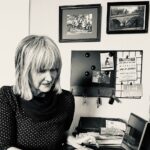|
Getting your Trinity Audio player ready...
|
TIU : Hi John! We met probably in 1996/7 when we were doing The Gatherers film in Barrow!
J : That’s right, yes, Northern Stage Residence.
TIU : I don’t know much about what you’ve done in the interim. So where would you like to start?!
J : When I started coming up here to visit, I was living in Sheffield and I was painting. I was playing music, but I was painting and I was working part time at the University of Derby. And, you know, this is the time when I thought, okay, I need to be somewhere else and I need to do something else. By then I had kind of made a few friends up here. And I knew Mike Willoughby the musician and I used to come up to see him and then through him, I met various interesting people in Barrow and in Ulverston. I started coming up here more and more. When I moved up here, it was 1996 and I stayed at Jackie Drake’s house for a little while, and then I moved onto Barrow Island, and again, people were just very, very kind, and very interested in what I was doing and I guess quite curious as to why I was there, you know, and what was the interest? A lot of those people I still work with now. Some really good relationships built up – working relationships and friendships. And suddenly I had a social life and suddenly I had somewhere to work and had a subject which was the place. I think that is largely what I still do now. I think I still respond as most of my work is about this place. It can be drawings, it can be paintings, it can be books about the local pop culture. It can be music that’s to do with the place. So, broadly, it’s to do with landscape, but a very very broad definition of landscape.
TIU : Cultural, physical, metaphorical.
J : Metaphoric is good, yeah. That’s right.
TIU : Did you have formal artist training?
J : Yes and no. I went to Leeds Polytechnic in the 80s. You were kind of left to your own devices There was a structure to the course. I went there saying I wanted to paint. But you were exposed to a lot of interesting things. It was a very kind of radical approach to art at that time in Leeds and there had been a lot of interesting people that caused uh, how to put it, caused the Polytechnic to have a certain notoriety. And we came in as things were slightly in flux but there was still echoes of what had been. This kind of quite radical approach to fine art. Lots of performance-based stuff, lots of incidents, lots of happenings, lots of music or things that were to do with music, with the nature of the way music is organized. Forming a band for instance, the band became the work, you know. A lot of the time, I found it all very interesting but it didn’t come out in my work for a long time. It took a long time to kind of ferment I think I’m probably a bit slow to respond. But looking back, the things I did learn at Leeds were like how to perform a little bit, how to put a group together, how to think outside of, (not the box), I’ve got to think outside the easel or beyond these easel, if you like. And I think it did begin to broaden me out a little bit. Again I met some great people that I still work with and hang out now. I did my MA in Sheffield – idea there was to kind of re-evaluate what I’d been doing in the meantime and try and refocus a a little bit. I mean when I worked in Derby I used to do a little life drawing and teaching part time. And there was a guy called Mark Pawson who came to see us one day. He was extraordinary. He had a little catalogue of tiny little things that looked like souvenirs, miniatures, tiny little books and print editions. And it was very strange and very funny. I hadn’t really seen anything like it. It struck a chord and it went in but it didn’t come out right away. I did have a structured art education at the polytechnic, but a lot of it, like I say, it has been like a delayed action time bomb going off.
TIU : So you settled on Barrow Island?
J : Yes in the nineties and got involved in many Barrow things but I was up in Ulverston often. Barrow is an incredibly rich place culturally and getting richer and stronger. Lots of really, really interesting people doing interesting things. There was the Rachel Ashton Company, which is now Theatre Factory, Barracudas were there, Art Gene was there and lots of really interesting individuals. I was doing a lot of work with the Dock Museum. I was exhibiting down there occasionally, and then I was working at the sixth form college with Colin Aldred. The Gatherers project that you mentioned, I mean, I knew Sarah Miller was a writer from Barrow, and I can remember walking around the corner of the street one day, she’s there and says to me, oh, we should go up the forum they are doing a film. They are looking for actors You should go and try out. And that’s all that was. And that led me into some really interesting places, you know, I ended up on the back of that doing some work with Rachel Ashton’s company. I was in this extraordinary play called “Cold” that we toured around the country. That was one of the greatest experiences I’ve ever had. And it wouldn’t have happened anywhere else. Local councilors as well were interested in what you were doing, we had an arts development officer at the time Doe Brannon, who was working incredibly hard to encourage artists and to develop the town as a place that artists would find attractive and would want to like to come to like I did, but also to develop from within the town.
TIU : I remember Doe. One day during filming there was a big drama about pulling the funding or something and she said “Oh Heather! Don’t look at me like I am the wicked witch!”
J: One of the councillors one day, Eric, he says to me, you need a studio , don’t you? You’re working out of your flat? And I says, yeah, yeah, and he says to me, well, the school across the road on Barrow Island has got an empty class room. And they gave me this enormous classroom and said, right, you can have this as a studio but the deal is that you work with the kids in the school, run an art club or something like that. So I just say, yeah. And I moved in there and I was in there for years. I would run this weekly art club for a small group of the boys and girls. But more often than that they knew that my door was open, they could come in, and look around. And if it was shut it was because I had a hangover or I was reading the paper or miserable.
TIU : Sounds like the average staffroom…
J : One of the teachers would knock on the door and say, you know, we’re doing Tudors and Stewarts again, have you got any ideas? And I would come along and do something visual that would lead into the subject, you know that was fabulous. The Head was Julie Fryer, she was great, a really interesting, progressive head teacher. There was a big program called Creative Partnerships as well and that was to do with art and education. And I got involved in that on a kind of regional basis. It was to do with embedding the arts in the curriculum in the same way, I think that people like Doe Brannon were trying to embed the arts in in the town.
TIU: That was another question I was going to ask how you got into art in education. So I guess you just got your DBS check and just went from there?
J: Yeah, that’s how it worked. And then you start getting phone calls. One day somebody suggested print making in three different schools in one day. Did I want to do it? Yeah, that sounds good. Then I realized where the schools were, and they were like out in the green bit, miles between each one. I was standing in Hawkshead with two plastic buckets full of printmaking equipment, waiting for a car that would then take me to Langdale or something, I think it was it was very exciting and yeah, again, you just met some great people and lots of lots of very interesting doors opening you know. Yeah, it was good.
TIU : So these days, continuing the art and education would you say that you do quite a lot of it? I know you do it at my sons school do you do it at other schools as well?
J : What we have now is this little organization in inverted commas called Art Space.. And through that we do things like Story Fair, which is a regular storytelling project, which we’ve been doing at Sir John Barrow and we’re trying to expand it toward other schools. We get Dominic Kelly – who in the world of storytelling – he’s the top man. He’s the best there is and we put him into school every year. It works for two year groups and he teaches them these techniques, stories through the oral tradition. And then the performance is part of Furness Traditions Festival. One of the greatest joys in the year. You raise the money to do it, you schedule it with the school and then we just hand it over to the children and they do it. It’s great. We’ve been doing that for I think this is the 7th year now.
TIU : It’s impressive to see them remembering their stories no cues or scripts.
J: Yes! So we do that and then me and my colleague Alex, we run the scrap store, or we try to run the scrap store in Ulverston which is the resources and recyclables centre.
TIU : Where is it?
J : It’s underneath the Red Rose club. I always say it’s the tomb of an insane pharaoh when you go down there. It’s view by appointment only but you can find us on Facebook. We do a lot of things there that leak into schools and into community groups and organizations. If somebody wants to do a play, we’ve got materials for them that kind of thinking. When I was on Barrow Island, I ran a residency at Barrow Football Club and we appointed an Artist in Residence, and that was my friend Glenn. It was an opera about Barrow Football Club which we performed the Royal Opera House in Covent Garden as part of their festival. That was very strange indeed. Well there was lots of education work that came out of that as well. We ended up forming an organization, which is again, still going, I’m not involved in it anymore, but it’s called Full of Noises and it’s in Barrow Park.
TIU : Oh, I may be following that online. I’m only on the fringe of things, so I’m only just getting to know what is what!
J: Me and Andrew Deakin, the composer and Glenn, we kind of pulled that together. And it’s still going. and its gone from strength to strength. And we used to do a lot of education work with artists that we would bring over. We do a lot of education work around sound. Lately the education side of it has been, I don’t know, it’s kind of mutated more into a general community approach. We do things with Mind, my friend Alex again , we run a project with Mind in Furness which is a visual arts project. I’ve done increasingly more heritage based stuff, like with Homes for Ulverston , with their thing about the brewery. And the Barrow Music Project, which again, it’s that idea of a cultural landscape that kind of tapping in and somehow finding a way to involve young people in it.
TIU : So would you say community projects are the main focus of what you’re doing at the moment?
J : Not really no, it’s always there I think if you say, you’re working with people as a kind of community resource, then one of the things that you owe them is that they want to see themselves to some degree in the work that you do. Now the other one is you need to involve young people in order to – I’m not gonna say inspire – but to kind of awaken an interest in as broader definition of what art can be. If you, as I probably did at one point when I started out, thought that the art world was a very narrow limiting sort of place. When I went to Leeds I realized it could involve shooting budgies. I thought, well, that’s interesting. You know, not very nice, but interesting.
TIU : In the same way Tracey Emin just doesn’t make a bed…
J : That’s right. So, we don’t advocate the shooting of budgies, but in schools, you can sit down with the group and you can say, right, I am artist and my practice includes this and it can be enormous it can be a really, really broad range of things. Then they start asking questions. Why is that art ? That’s a book, why is that art? That’s a record? Why is that art?
TIU : So do you ever get asked something by a child that like totally blows your mind or makes you reassess what you’re doing?
J: It does happen quite a lot. I particularly used to see it when I was on Barrow Island, because I think they saw so much of me, I was there all the time. I was really embedded in the school and they would wander in one day and I’d be making football stadiums out of kitchenware. I used to buy shiny groups of kitchenware from Tesco. Or raid skips for bits of office equipment and build these football stadiums in my space. And they’re coming in one day asking if it is the football ground. Then the conversation can begin, you know. And because you are used to working on your own, the conversation that you usually have is with yourself. All of a sudden you’ve having one with this like eight year old lad who is interested in art and is interested in what you do all day.. .
TIU : I for some reason did art in a level and I was taught by Colin Aldred, just to go back to that. I was taught by him and I remember he like never gave up on me even though I was bloody awful at it. He would always say Heather, conceptually, she’s really quite good. I don’t think he ever said I didn’t have the talent, but I knew I didn’t have the talent to be a fine artist. I’ve realized that I don’t need it to do any kind of artistic project or endeavor. I’ll find a way of expressing myself, which is what kids need to know, I guess, but art can encompass a lot of things, not just the ability to draw and I’ll always have a great jealousy of people who can draw and paint because it’s different to writing. AI has brought in this thing where I can write a picture. I find that really interesting, scary though, to speak about it with an artist like yourself because that’s the other thing I want to ask you. How do you feel about that?
J : I don’t think it’s any different to sampling. If you are ok sampling somebody’s music then you probably should be alright with whatever it is the AI does to imagery, you know, not massively different.
TIU : It takes your prompt – you’ve got to be intuitive to get what you want out of AI because it’s relying on your prompt first and foremost to find the material to emulate.
J : It’s nuanced…
TIU : Yes it’s a sort of co-creation, but it then learns from different sources, what you are asking it to do and it mixes them together and pumps a result out. Maybe like sculpting with words and computers.
J: I remember Glenn used to be into text based games where again the language was very precise…
TIU : Yes, it’s like coding in one sense.
J : Yeah, that’s the idea I am trying to get to – it’s quite close to coding. and again, you need grasp of a language that is partly a creative language and is partly a technical language. And I think another interesting thing about it is where do you stop. If you think everything that you produce has the right to be a jumping off point of something else as well? Then that process doesn’t ossify. It doesn’t become a mannerism, you know, like it’s the same with any other kind of art process, really, I suppose. If you leave the door open something can escape and and go into the next room.
TIU : How would you feel, though, if somebody took your signature style using Ai? How long does it take you to do it?
J : A while.
TIU : A generator could drop that in a few seconds with the right prompting. Or at least something very similar. But it would be lacking. Emotion, I’d say, emotional depth that you’ve put into it because there’s a lot of perspective in that piece. Like there’s a lot of dramatic perspective.
J: It’s about being immersed – something about the relationship between you and this other thing over here, and trying to narrow that relationship down. When you are drawing, it’s about you and everything that isn’t you, and you try to close the gap. My friend Jamie said to me – no, no, no, there is no gap. You’re made of the same stuff. You’re literally made of the same stuff. It’s about recognizing that relationship, you know, see, because that’s what you don’t get with anything else. There is a physical aspect of that stuff as well. You know, kind of roughed up surfaces and textures and things like that. And that is something that you probably don’t get in a digital world, that kind of granular nature. You can do it with sound.
TIU: Well, you can get a 2D representation of light. It’s still 2D, it’s not 3D.
J : A work of art that’s based on an image will be different to one that’s based on in the physical world. That’s probably the difference. Most pop art that I think of is based on other imagery or commercial objects or something like that. Many artists paint from photographs and newspaper cuttings, Francis Bacon used to paint from photographs. You know, so it’s not like there’s no tradition – artists drawing on appropriated or borrowed imagery or you know, it is just the latest version of that.
TIU : I put more value in something that I’m gonna put on my wall. I prefer the physical work, created by human hands. I use AI in my digital work mainly to do tasks like removing backgrounds and upscaling.
J : There will be a way in which that kind of authenticity can be invested in in things that come out of the AI world. I mean, I know people who work in the digital world and you wouldn’t question that there is authenticity in what they produce. You know, you can hear their sense of humor. You can hear or see their attitudes to their work in it, which is probably quite close to being marks on canvas as expressive of something.
TIU : Well, music isn’t tangible until you record it and put it out on something. I mean, even when you’ve recorded it, it’s still not tangible unless it’s finished and you’ve got like a master tape or something, or whatever you have these days. I don’t know, that’s what it used to be. A master tape. With digital stuff, one of things you could maybe do in the future is like an NFT.
J : I get a bit lost when when it gets to that point, it’s probably mainly a Donald Trump thing I couldn’t quite get my head around what was for sale there and and how you got possession of it.
TIU : Well, usually through some kind of crypto means..
J : That’s the point in some way I wonder am I leaving this world, you know, I’m thinking, well, that’s something that I probably won’t learn.
TIU : Yeah, I totally get that.
J : AI generated art you know, I think there’s a difference between that and the AI generated artefact the actual thing. You know, what have you got in your hand, or is it not in your hand? It’s on your phone or at the end of it. That’s an interesting thing. I suppose if anything, it will be that kind of conversation about how people experience art works. You know, like you don’t have to walk into a white cubed room now. Grizedale is a good example of this, that kind of environment based stuff that was placed within a non arts space . Then by putting something there it affects the rest of that space. Now probably AI generated work will do that, it will affect the space that you put that into. Yeah. And that will be interesting.
TIU : It’s a bit of a crazy minefield.
J : One thing I do like and it probably is an age thing is the materiality of things. I liked using sound and using samples and electronic sound for a while, that was really interesting. Again, because I learned a skill. I’ve not learned a skill since I was about 20!
TIU : I don’t tend to put a record on unless I’ve got the time to sit down and listen, but I do own the records. I listen to music every single day through my headphones digitally. I can’t get far down a street on my own without a soundtrack. If I really, really like the album I will get a vinyl of it because I need to have what the perceived album is – a complete work to me. So everything that they put into that that – order of the songs, everything that they’ve designed. I look at it and think, why don’t you just sell all this vinyl? It’s very heavy and it’s just sitting there. But I wanted to hold it.
J : It’s more a beautiful kind of collision. Materiality distinguishes a vessel for art as well as a record. This beautiful object that can be made to contain so much information, or so little.
TIU : Even down to the thickness of the vinyl or the colour that they’ve chosen. The Breeders once found a toothbrush that was like a certain shade of mint and they took it to their pressing and it was like, you know, that’s the kind of DIY stuff I remember.
J : When I started thinking about making records and I said to myself – what do you like? You know, I like books and I like records. I like magazines.
TIU : There’s always a place for the tangible because there’s a sense of ownership people need to have. People want to spend money and take stuff home.
J : It’s an interesting thought at one time if you talked about having ownership over something it would have to be something quite unique. It might be a very, very limited run in a particular ceramic or a painting or a print or something like that. But I think that there is that sense of people developing that almost verging on the fetishistic affection, for commercially produced objects like the records and books. Purely because it is that physical experience.
TIU : Tell me a little about your current show…
J : It’s a conversation between two artists. I mean I get on very well with Jess. Her work is very different to mine but I think in a way we’re both responding to similar things and it comes out in different ways. I think we both enjoy each other’s work so it seems like the logical thing to do. What we also have coming up is a project that’s been going on for a while called Reverb and Reverb is a spin off from the barrow music thing. We’ve been talking about the materiality of things and about souvenirs and about what people invest in – things like records and gig posters and tickets. We’ve got four artists, all of whom are looking at the way in which such material affects people. What stimulates them, what do they use it for you know, and that’s gonna involve looking at things like the way cassette tape decays. And the way it changes the information that’s on it. Looking at the nature of things and what happens to things that people say and the decisions that people make when they save a concert ticket or they keep a t shirt.
TIU: I question these things when I’m decluttering my house because I have a maximalist sense of design but a zen and minimalist mind.
J : When I was still mainly painting I can remember not being very happy. I went to the studio one day an there were all these paintings against the wall. And it was a bit like having people there. And I’m thinking, where are these gonna go? What’s gonna happen to these, you know? I actually pretty much stopped painting at that point and I started working digitally. And I began to work with things that didn’t make a big pile in corner of the room. Gradually, of course, I kind of receeded from that, and I’m making records now, enormous amounts of which are under my bed, magazines and books. So I went back to that materiality a little bit.
TIU : I guess one part of it is that I don’t want to end up to be a hoarder when I’m older. I don’t want to be found under a massive pile of everything with just a path going to the toilet. Swedish death cleaning is a thing. I’ve done two bereavement clearances and inherited items from those bereavements. It’s not just my stuff.
J : Well one thing I have been doing over the last few years because I’ve got like 30 years worth of drawing in a bloody great folder. I took a cold eye to to it and I began to get rid. So now 30 years worth is reduced to about 50 pieces that I think are all right. I am doing it because nobody else will do it, so I’m doing it.
TIU : To ask the famous TIU question – where are your favourite local spots?
J : The drawings that are in the show are all from the same place, overlooking the town. I go back and draw there because it is always different, but it is always the same. It will always show you something. These pictures that are going in the show, they look very different from each other. It’s partly your mood when you do it, it’s partly the weather and what it will show you. It’s all about what it shows you in your place within. I used to spend a lot of time wandering around the Port of Barrow when I lived in Barrow. It could be staggeringly beautiful down there. Barrow Island. I used to get a lot of ideas and it was a lovely special place. Mainly it’s probably all about encounters with people, really, where you come across people and where you have those important conversations like in school. Building your memories and make your memories and your work. Maybe somebody says the one thing that you need to hear at the time, you know… I’ve been kind of refining over the last few years where you work is about the land, about the place rather. Not just the appearance of the place. It’s about the people and the social side of it. The things that make up a place and that can include so many things, you know. So I think it’s about place, but not just one aspect of it. A place wouldn’t be anything without the people.
John’s current exhibition with Jess Levine “Eyes Open / Hands On” is now showing at The Dukes in Lancaster until 27th June 2025.
Play Summat We Know : Independent music and community in Barrow in Furness, 1976-96. Compiled and edited by John Hall.
